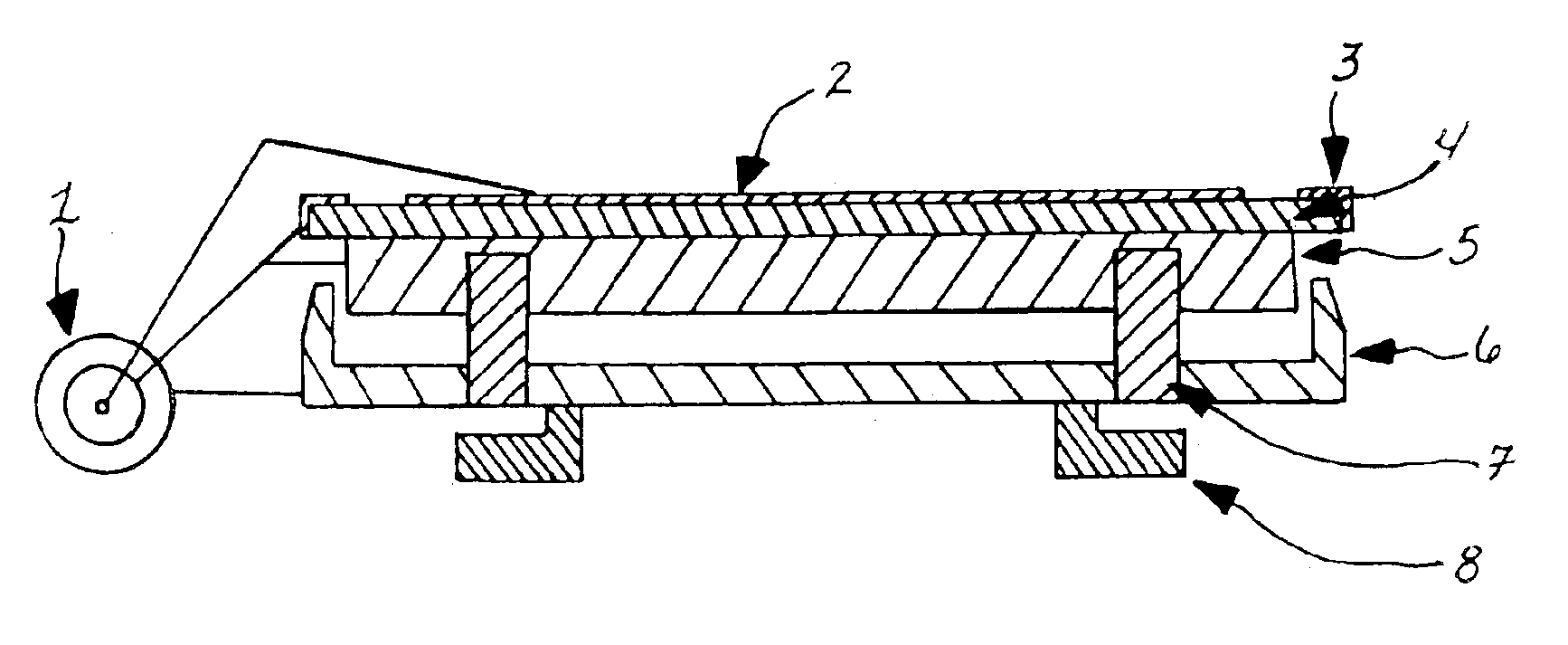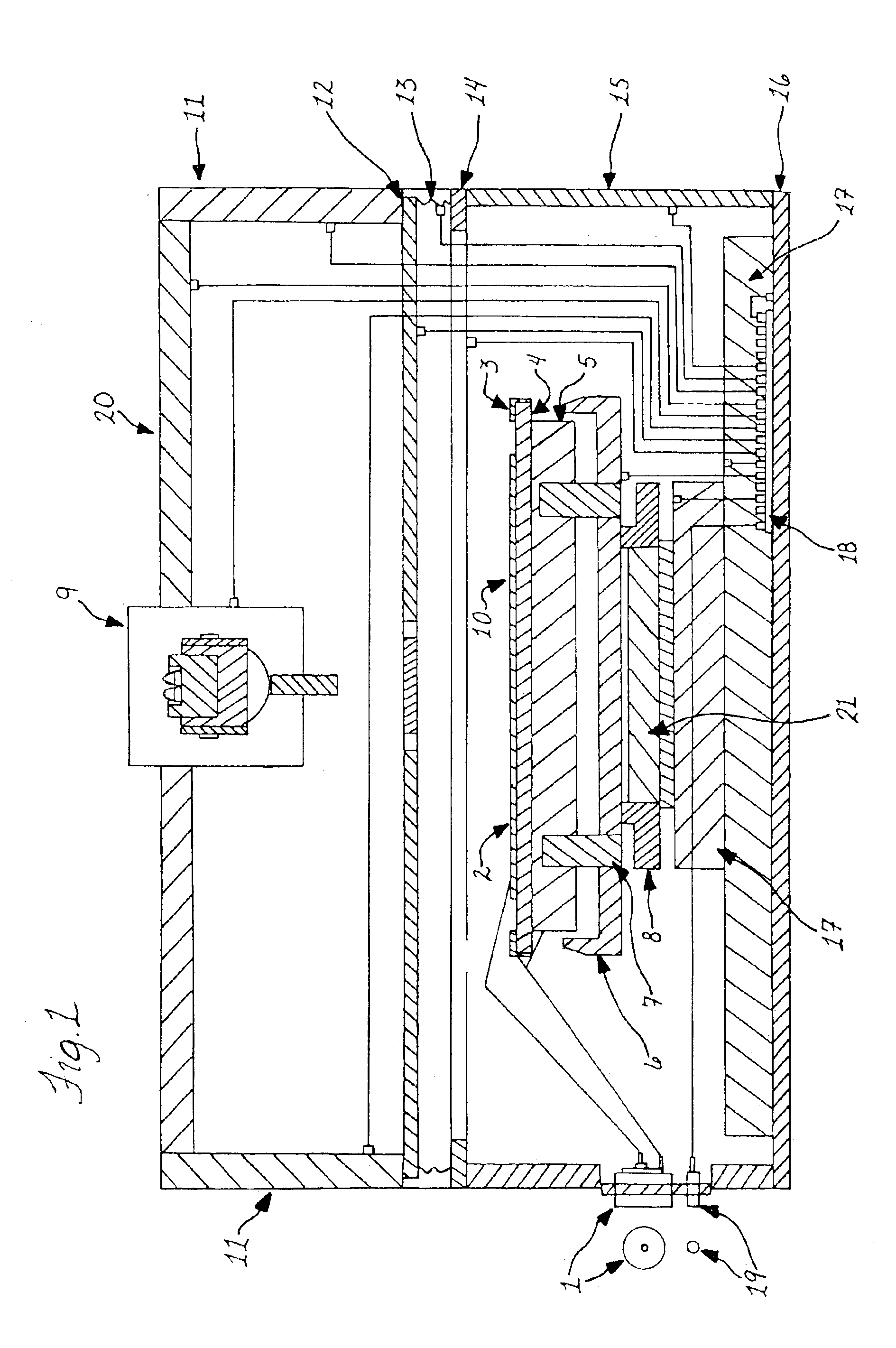Wafer probe station
a technology of wafer probe station and wafer body, which is applied in the direction of individual semiconductor device testing, printed circuit testing, instruments, etc., can solve the problems of adversely affecting low level voltage and current measurement, and mechanisms that often perturb measurements taken in integrated circuit device requiring very low level measurement, so as to improve performance and low noise
- Summary
- Abstract
- Description
- Claims
- Application Information
AI Technical Summary
Benefits of technology
Problems solved by technology
Method used
Image
Examples
Embodiment Construction
[0030]With reference to FIG. 1, a wafer probe station embodiment is shown in which a chuck apparatus 10 is supported within a probe station chassis. The chuck apparatus supports a wafer or other semiconductor integrated circuit device under test (DUT). The chuck apparatus 10 may be independently moved along X and Y axes using a positioner (not shown), which controls the X and Y components of the stage 17. The chuck apparatus 10 is positioned on a hub 21, which is attached to the X / Y stage construction 17 of the wafer probe station. As shown, a coaxial connection 1 is indicated for electrical signals being provided to the wafer probe station. Another connection 19 is provided to facilitate grounding of the probe station chassis by means of central point ground 18. As shown in FIG. 1A, a triaxial connection implementation may also be provided for the electrical signals, e.g., force, guard, and sense, that are applied at the wafer probe station to facilitate grounding of triaxial cable...
PUM
 Login to View More
Login to View More Abstract
Description
Claims
Application Information
 Login to View More
Login to View More - R&D
- Intellectual Property
- Life Sciences
- Materials
- Tech Scout
- Unparalleled Data Quality
- Higher Quality Content
- 60% Fewer Hallucinations
Browse by: Latest US Patents, China's latest patents, Technical Efficacy Thesaurus, Application Domain, Technology Topic, Popular Technical Reports.
© 2025 PatSnap. All rights reserved.Legal|Privacy policy|Modern Slavery Act Transparency Statement|Sitemap|About US| Contact US: help@patsnap.com



